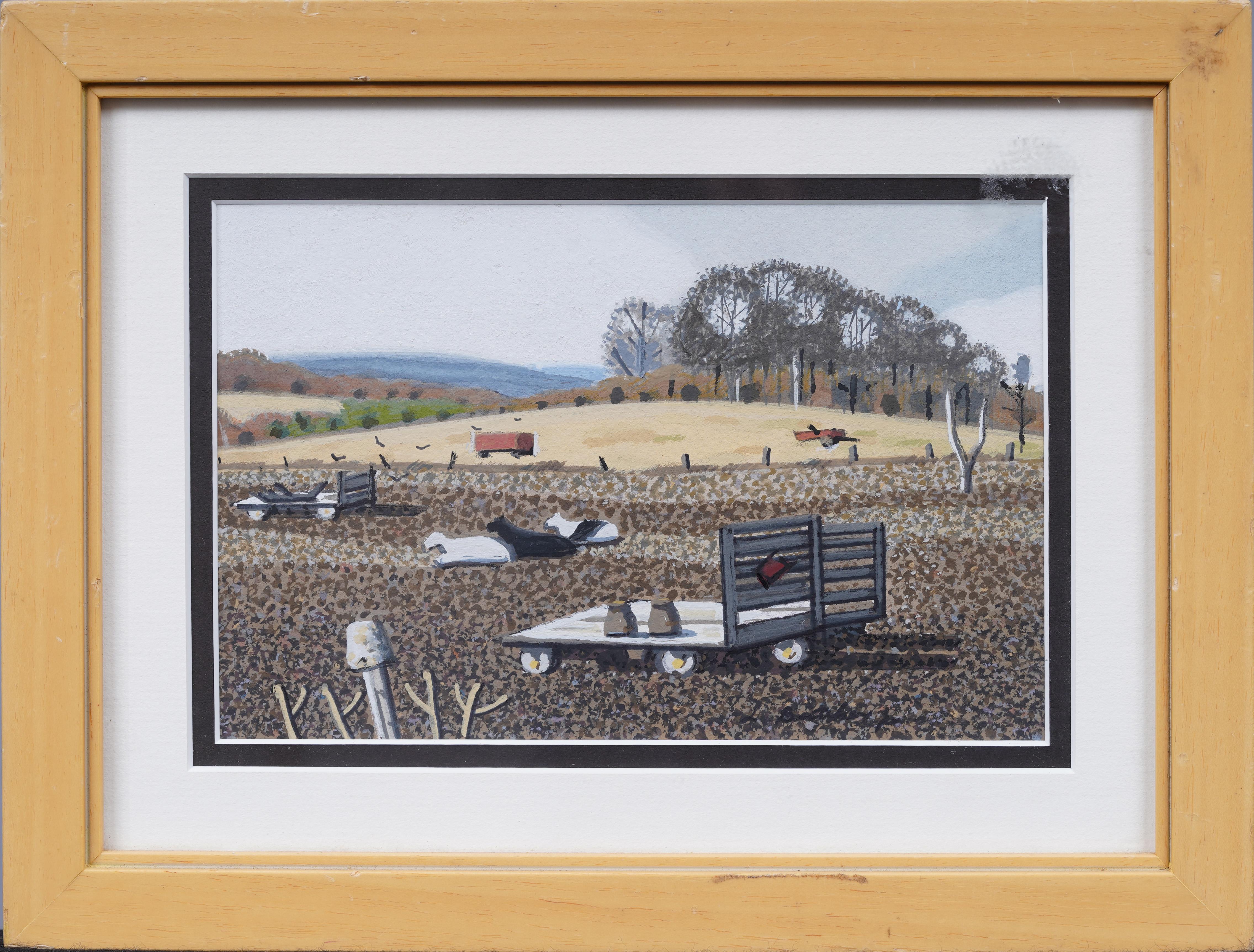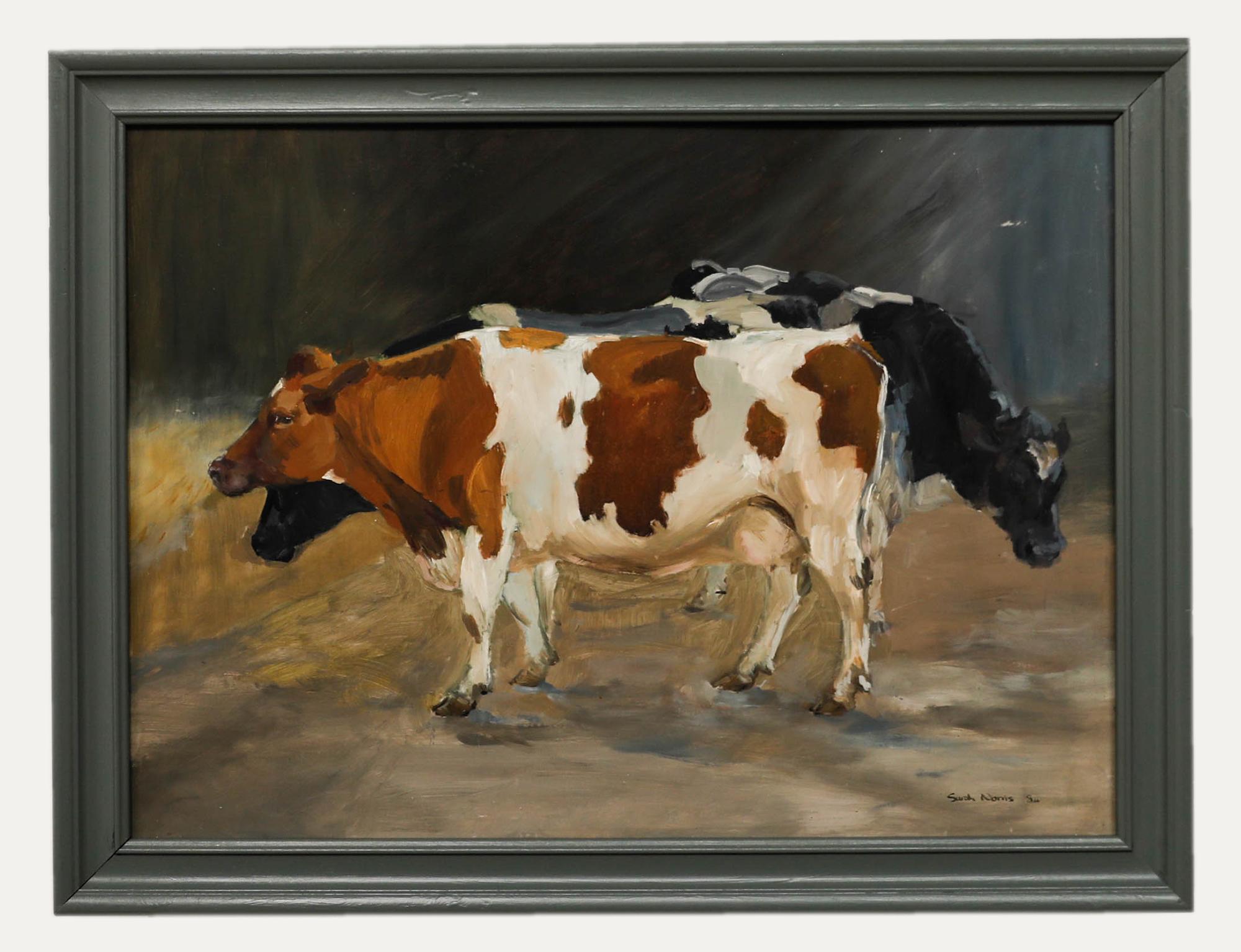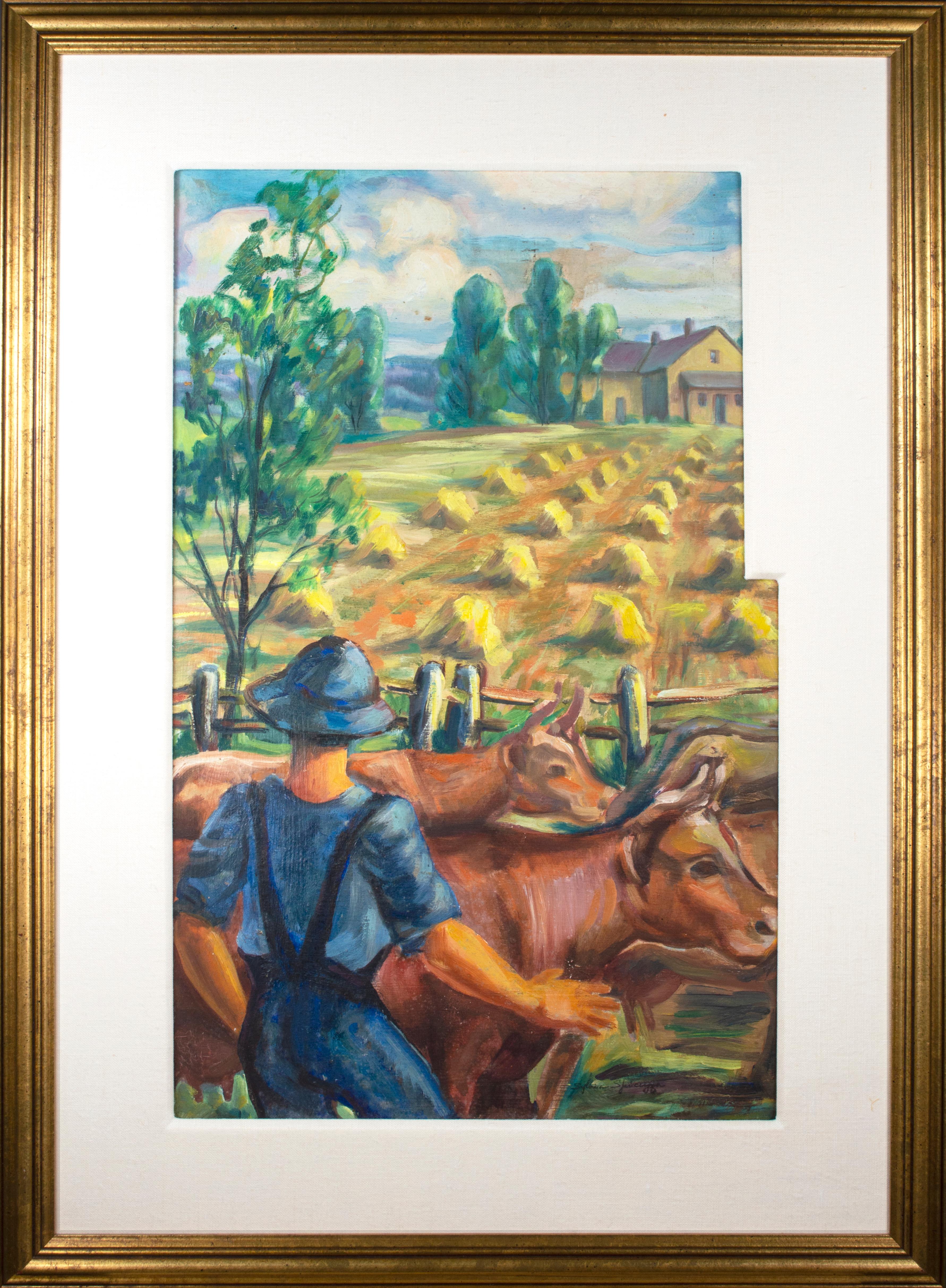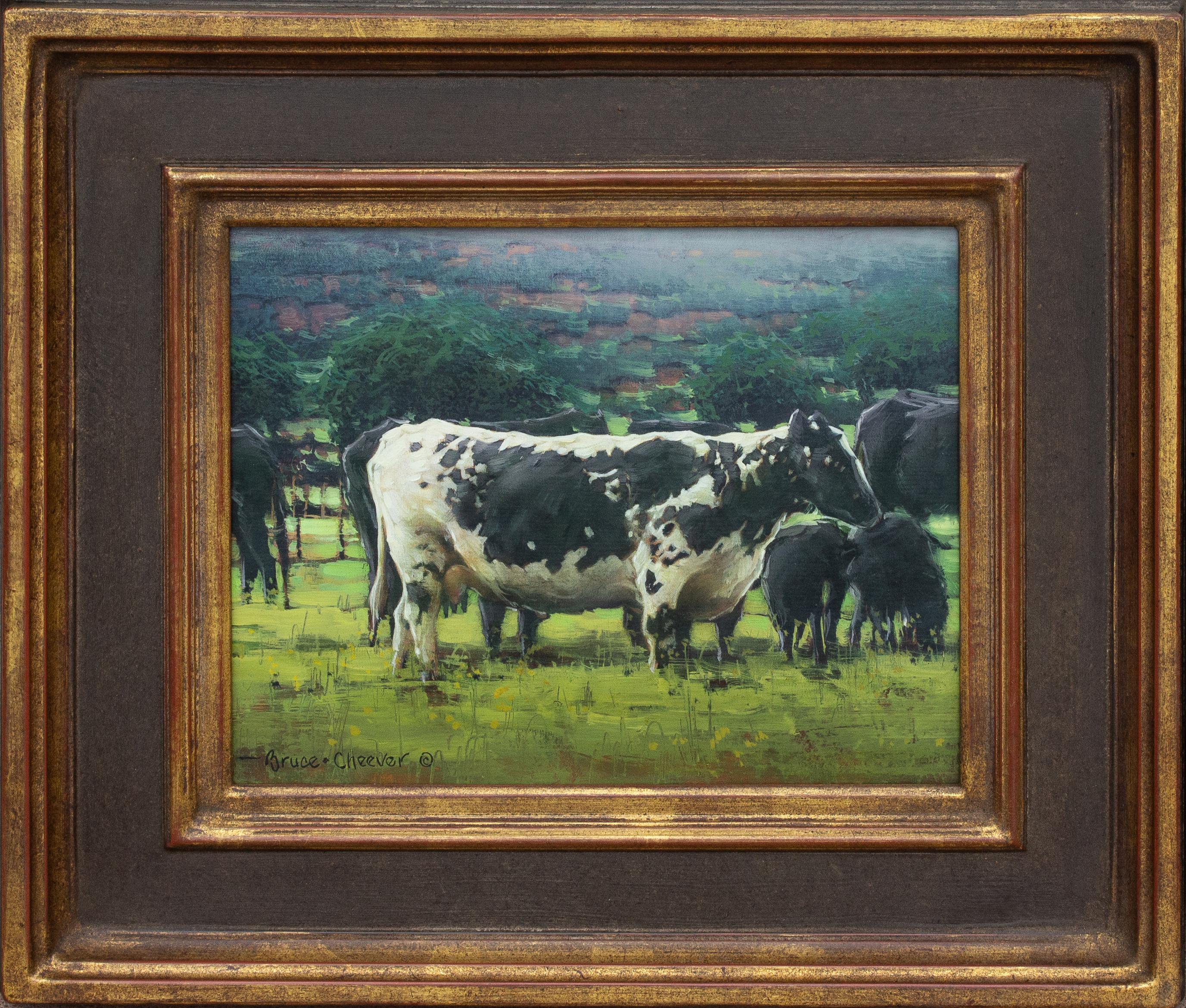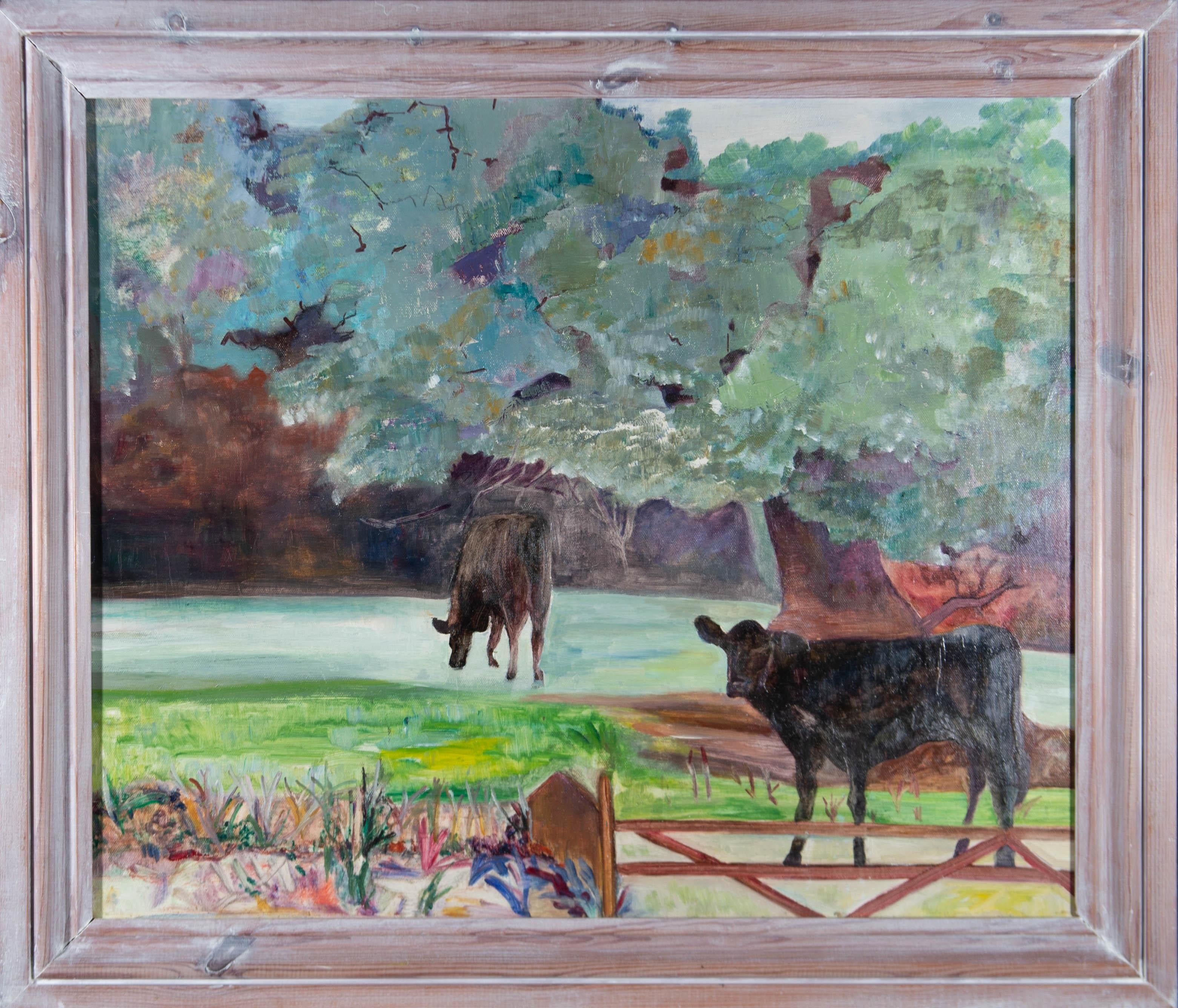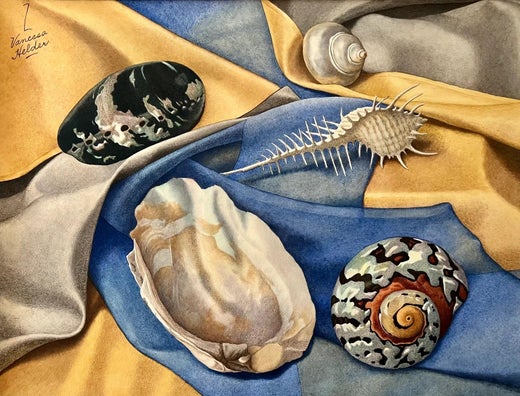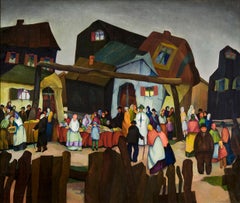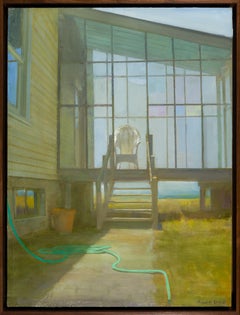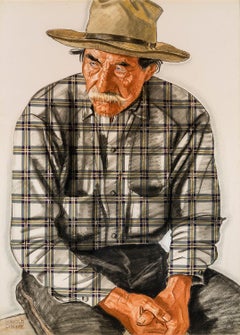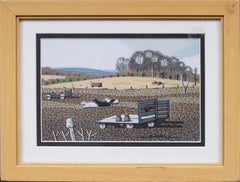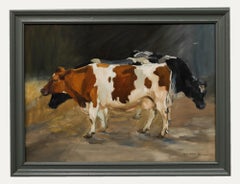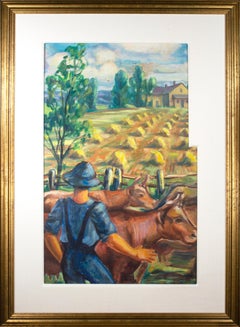Zama Vanessa HelderRed Earth and Spotted Cows1942
1942
About the Item
- Creator:Zama Vanessa Helder (1903 - 1968, American)
- Creation Year:1942
- Dimensions:Height: 17.75 in (45.09 cm)Width: 21.5 in (54.61 cm)
- More Editions & Sizes:UniquePrice: $22,500
- Medium:
- Movement & Style:
- Period:
- Condition:
- Gallery Location:New York, NY
- Reference Number:Seller: APG 8414/21stDibs: LU2311800422
Zama Vanessa Helder
West Coast artist Z. Vanessa Helder seems to have been prepared from the start to pursue an independent course in art. Her full name, Zama Vanessa Helder, curiously was chosen by her parents to represent a town in North Africa and the name of a former music teacher, respectively, but she preferred the more mysterious Z. Vanessa Helder, or more simply “Zelma.” She was born in Lynden, Washington, a small town near Spokane. Her mother, Anna Wright Helder, was an artist, so it is not surprising that she started painting at a young age, and that she decided early on to pursue a career as a professional artist.
Helder enrolled at the University of Washington, Seattle, where she received her first formal studies. Following her graduation, Helder began her professional career in Seattle, where she established herself as a specialist in watercolor. She was recognized for her artistic talents in 1934, when she was awarded a two-year scholarship by the Art Students League, New York. She was one of only ten outstanding artists from the United States so awarded. At the League, she studied with Frank Vincent DuMond, George Picken, and Robert Brackman. Helder’s course of study at the Art Students League proved to be enormously influential. She not only refined her watercolor technique, but also added oil painting and lithography to her repertoire. Furthermore, her exposure to contemporary American modernism, which was then the dominant mode in the New York art world, had a decided impact on the development of her own work.
Soon after her arrival in New York City and subsequent matriculation at the Art Students League, Helder’s career accelerated rapidly, in a way only possible in the New York art world. In 1935, she began to participate in a number of group shows in New York galleries and clubs, including the New York Watercolor Club, and she was elected that year to the National Association of Women Painters and Sculptors. In 1937, she was given her first “one-man” show at the Grant Studios, New York, an institution with which she maintained a relationship for several years.
During this period in New York, Helder frequently sent works to Seattle for exhibition. She remained the darling of Seattle’s art society, with frequent reports of her activities in New York appearing in the local newspapers. After she completed her studies at the Art Students League, Helder returned to Seattle, where for many years she was a popular local figure, noted as much for her art as for her idiosyncratic behavior, which included walking “Sniffy,” her pet skunk, prominently throughout the streets of Seattle. She also worked locally as a WPA artist, painting murals in various civic buildings. She exhibited annually at the Seattle Art Museum from 1936 to 1941, capped by winning a prize in 1936, and holding a solo exhibition there in 1939. Helder also participated in exhibitions throughout the West, including at the San Francisco Museum of Art, California, in 1936-37; the Portland Art Museum, Oregon, in 1936; and the Denver Art Museum, Colorado, in 1938 and 1940.
About 1939, Helder moved to Spokane, where she helped found the Spokane Art Center, an art school at which she was an instructor in both watercolor and lithography. She spent three productive years there until 1941, when the federal government, which had funded the center from its inception, canceled its financial support. Later that year, Helder returned to New York, and soon after married Robert S. J. Paterson, an industrial architect. Helder, ever the individualist, retained her distinctive maiden name. In 1943, the couple moved to Los Angeles, California, where she remained until her death in 1968. She was as active as ever, exhibiting annually at the Los Angeles County Museum of Art, from 1945 to 1948, as well as at a number of Southern California institutions until the late 1950s. Throughout her career, she remained a committed watercolorist, exhibiting regularly at the American Water Color Society, from 1936 to 1958, and the California Water Color Society, from 1939 to 1958. Today her work is held in a number of museum collections, including the Newark Museum, New Jersey; the High Museum of Art, Atlanta, Georgia; the American Academy of Arts and Letters, New York; and the Cheney Cowles Museum, Spokane.
Helder’s style is notable for the sharp, almost austere precision of her drawing and her coolly modulated palette. Her work certainly suggests a Precisionist linearity and objectivity that one normally associates with artists such as Charles Sheeler and Ralston Crawford. However, unlike these artists, who typically isolate elements of machinery and architecture from nature, Helder usually juxtaposes man-made objects with natural ones, treating all elements with the same cold, objective treatment. Her best works are winter scenes, which, because of the naturally stark character of the season, are complemented by her uncompromising eye.
The high point of Helder’s career came in 1943, when she was represented by 12 watercolors in “American Realists and Magic Realists,” a huge exhibition at the Museum of Modern Art, New York. The exhibition included work from past American masters, such as Rembrandt Peale, Thomas Cole, Thomas Eakins, and Winslow Homer, and contemporary artists, including Edward Hopper, Charles Sheeler, Louis Lozowick, Ben Shahn, and Andrew Wyeth. The fact that Helder was represented alongside these artists is a testament to the popularity of her art and the singularity of her vision.
(Biography provided by Hirschl & Adler)
- ShippingRetrieving quote...Shipping from: New York, NY
- Return Policy
More From This Seller
View All20th Century American Modern Paintings
Canvas, Oil
2010s Contemporary Landscape Paintings
Oil, Panel
20th Century American Modern Mixed Media
Mixed Media
19th Century Still-life Paintings
Oil
2010s Contemporary Landscape Paintings
Panel, Egg Tempera
2010s Abstract Abstract Drawings and Watercolors
Watercolor
You May Also Like
1970s Modern Landscape Paintings
Oil
20th Century Animal Paintings
Oil
1930s American Modern Figurative Paintings
Oil, Board
20th Century Landscape Paintings
Oil
21st Century and Contemporary Realist Paintings
Oil
21st Century and Contemporary Landscape Paintings
Oil
Read More
With Works Like ‘Yours Truly,’ Arthur Dove Pioneered Abstract Art in America
New York gallery Hirschl & Adler is exhibiting the bold composition by Dove — who’s hailed as the first American abstract painter — at this year’s Winter Show.
Remarkably, Elizabeth Turk’s Sculptures Highlight the Lost Voices of Extinct Birds
In one of the first live and in-person exhibitions at a Manhattan gallery since last spring, the California-based sculptor gives the lost voices of endangered and extinct birds and animals a magnificent embodied form.
